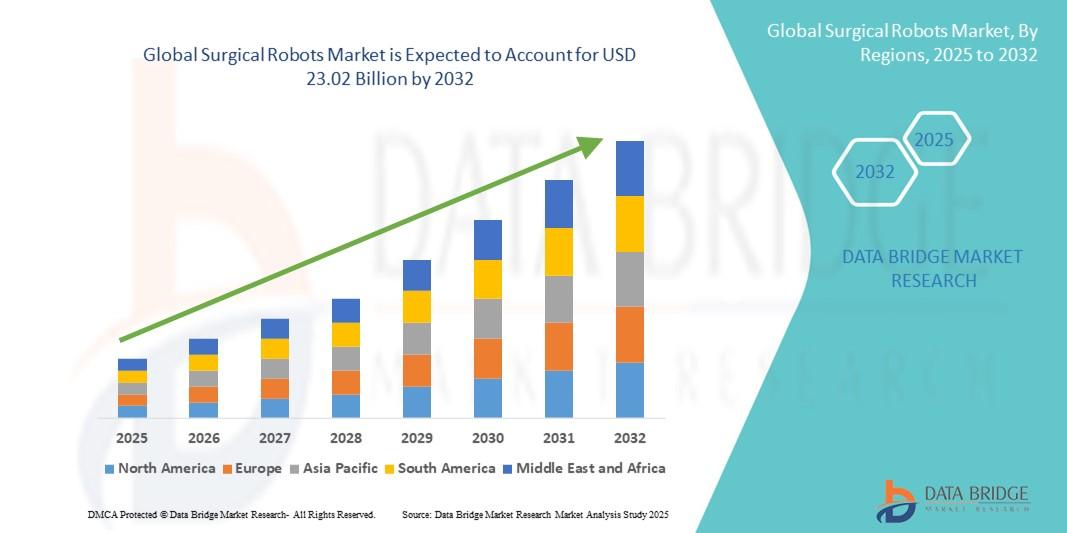Global Neural Compression for Space Links Market Poised for Rapid Growth Driven by AI-Based Data Transmission Innovations
The Neural Compression for Space Links Market is experiencing a surge in global attention as artificial intelligence (AI) and machine learning (ML) revolutionize space communication networks. Neural compression technologies are enabling efficient, real-time data transfer across vast interplanetary distances, reducing bandwidth needs, and enhancing deep-space communication efficiency.
Market Overview
Neural compression refers to AI-driven algorithms designed to reduce the size of transmitted data without significant loss of information. In the context of space links, these technologies play a critical role in minimizing latency and optimizing limited communication channels between spacecraft, satellites, and ground stations.
According to Research Intelo’s latest findings, the market is projected to reach USD 1.4 billion by 2032, expanding at a CAGR of 18.9% from 2025 to 2032. The growing volume of satellite-based data, combined with the increasing need for high-speed interplanetary communication, is driving substantial investments in neural compression systems and related space communication architectures.
Key Market Drivers
-
Exponential Growth in Space Data Generation:
Modern satellites generate terabytes of imagery and telemetry data daily. Neural compression enables optimized transmission, ensuring timely data delivery even with limited bandwidth. -
Adoption of AI-Powered Space Communication:
AI-based models trained on dynamic datasets enhance transmission efficiency and reduce signal noise, making neural compression indispensable for future deep-space missions. -
Increasing Interplanetary Mission Count:
The growing number of lunar, Martian, and asteroid missions creates demand for efficient, autonomous data management systems capable of functioning in bandwidth-constrained environments.
Request a Sample Report:
https://researchintelo.com/request-sample/100601
Market Restraints
Despite the promising trajectory, several challenges could influence market expansion:
-
High Computational Requirements: Implementing real-time neural compression demands significant onboard processing power, which increases spacecraft hardware complexity.
-
Integration Challenges: Compatibility between neural compression systems and existing communication protocols requires extensive testing and standardization.
-
Regulatory and Security Concerns: As data compression involves sensitive information, ensuring data integrity and security during transmission remains a vital concern for space agencies.
However, ongoing advances in low-power AI hardware and adaptive compression frameworks are expected to alleviate these restraints in the near future.
Emerging Market Opportunities
-
Edge AI for Spacecraft:
Integrating edge-based neural compression systems enables onboard data optimization, reducing the need for ground-based processing and allowing faster mission decisions. -
Commercial Satellite Constellations:
The rapid deployment of communication and Earth observation constellations opens new markets for compression algorithms capable of handling high data throughput efficiently. -
Quantum Communication Synergy:
The combination of quantum transmission methods with AI-driven compression algorithms could redefine interplanetary communication efficiency and reliability.
View Full Report:
https://researchintelo.com/report/neural-compression-for-space-links-market
Market Dynamics
The Neural Compression for Space Links Market is evolving from theoretical research into practical applications, supported by increased funding for AI-driven space technologies. As space agencies, academic researchers, and private entities focus on data optimization, neural networks are emerging as a key enabler of next-generation space communication.
Research Intelo’s analysis indicates that global adoption will intensify as deep learning architectures become more lightweight and power-efficient. The integration of neural compression into spacecraft communication systems can reduce transmission costs by up to 40% while maintaining data fidelity across vast distances.
The transition from traditional lossless compression to adaptive, learning-based compression also enables dynamic adjustment to changing bandwidth conditions—crucial for long-duration missions to Mars and beyond.
Regional Insights
-
North America: Expected to dominate the market due to advanced R&D in AI systems and robust space communication infrastructure.
-
Europe: Growing investments in next-generation satellite systems and collaborative AI research are strengthening regional capabilities.
-
Asia-Pacific: Rapidly expanding due to national space programs emphasizing data optimization and satellite-based services.
-
Rest of the World: Increasing participation in global research partnerships and small satellite development is driving steady growth.
Enquire Before Buying:
https://researchintelo.com/request-for-customization/100601
Technological Innovations Shaping the Market
The convergence of AI, ML, and space communication technologies is driving significant innovation across the Neural Compression for Space Links Market.
Key advancements include:
-
Transformer-Based Compression Networks: Deep learning models that intelligently predict and eliminate redundant data patterns during transmission.
-
Onboard Neural Processing Units (NPUs): Specialized chips that execute compression algorithms in real time with minimal energy consumption.
-
Adaptive Bitrate Compression: Systems that dynamically adjust compression ratios based on available bandwidth and signal strength.
-
Self-Learning Communication Protocols: AI systems that continuously refine compression techniques to enhance throughput and reduce latency.
These developments are transforming data flow management across space missions, enabling more efficient scientific exploration and faster decision-making.
Market Forecast and Growth Potential
Research Intelo projects robust growth in the Neural Compression for Space Links Market, driven by the integration of smart communication frameworks into future spacecraft and satellite constellations. The market, valued at USD 370 million in 2025, is forecasted to more than triple by 2032, fueled by advances in onboard AI processors and mission automation.
Space agencies are investing in hybrid AI models that combine neural compression with predictive analytics to forecast communication bottlenecks, optimize data scheduling, and maximize link efficiency. These innovations are expected to redefine operational protocols for both manned and unmanned missions.
Furthermore, AI-enabled compression will play a vital role in Earth observation, space-based internet services, and interplanetary communication—sectors projected to account for over 60% of total market revenue by 2032.
Check Out the Report:
https://researchintelo.com/checkout/100601
Future Outlook
The evolution of neural compression signifies a major milestone in the modernization of space communication systems. As deep-space exploration intensifies, efficient and autonomous data transfer solutions will become essential for mission success.
Key trends shaping the market’s future include:
-
Expansion of self-optimizing AI communication protocols.
-
Development of energy-efficient neural compression hardware for CubeSats and small spacecraft.
-
Integration with next-generation optical and laser communication networks.
-
Wider adoption of federated learning models for inter-satellite cooperation.
The global market is moving toward a phase of rapid standardization and commercialization, supported by collaborative R&D and government-backed innovation initiatives.
Conclusion
The Neural Compression for Space Links Market represents a transformative leap in how data is processed and transmitted across the cosmos. Combining artificial intelligence with communication science, this emerging field enhances signal integrity, minimizes bandwidth constraints, and supports real-time interplanetary operations.
As identified by Research Intelo, the market’s growth trajectory reflects the increasing synergy between AI innovation and space communication needs. With expanding applications across defense, research, and commercial space networks, neural compression is set to redefine the boundaries of efficient data exchange beyond Earth’s orbit.
For stakeholders, the upcoming decade offers immense opportunities to invest in adaptive AI frameworks, data optimization tools, and next-generation communication architectures that will shape the future of space exploration.





